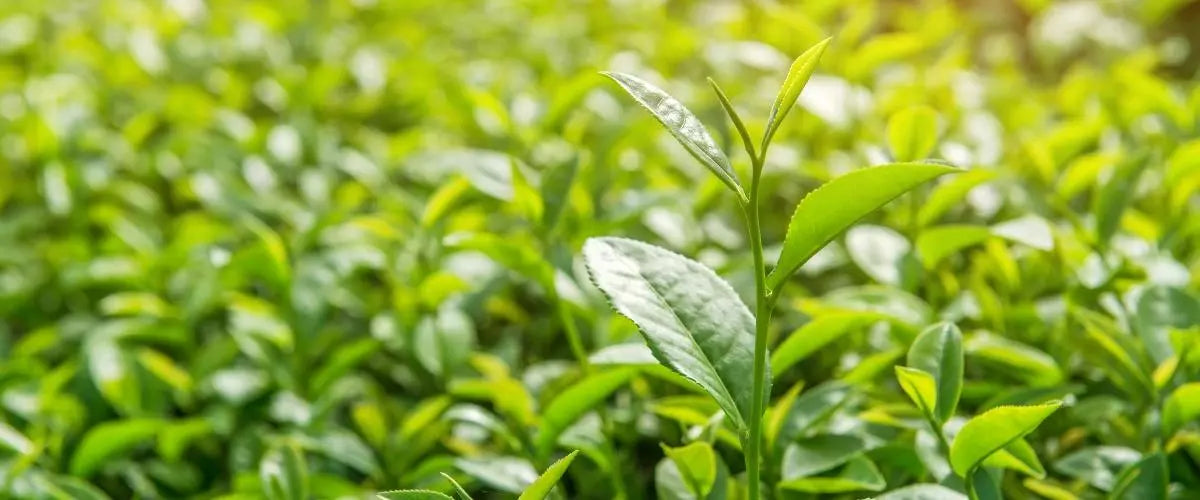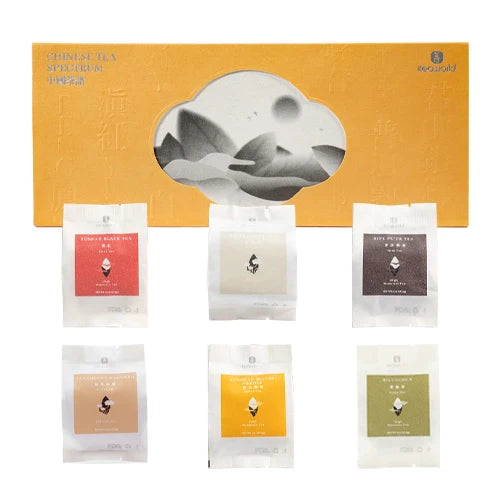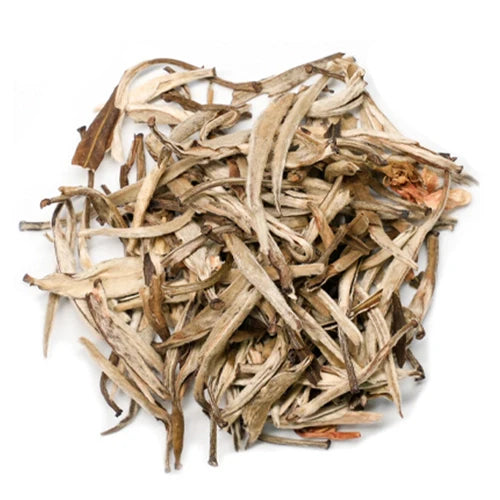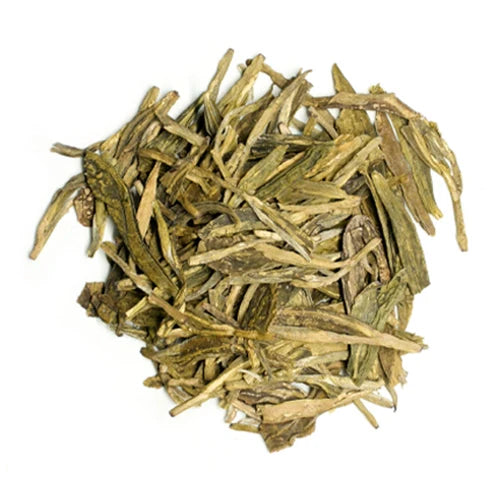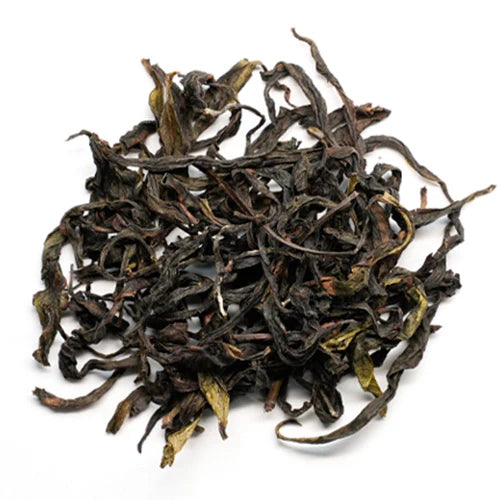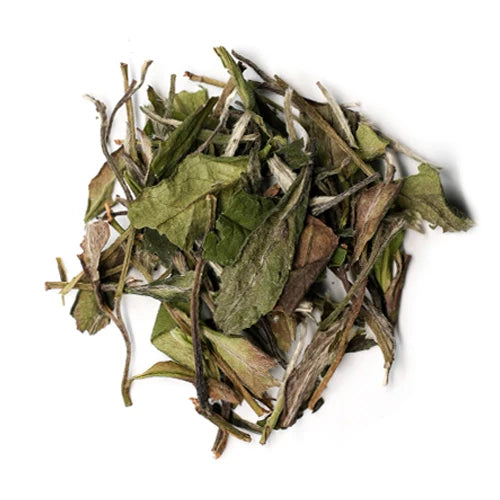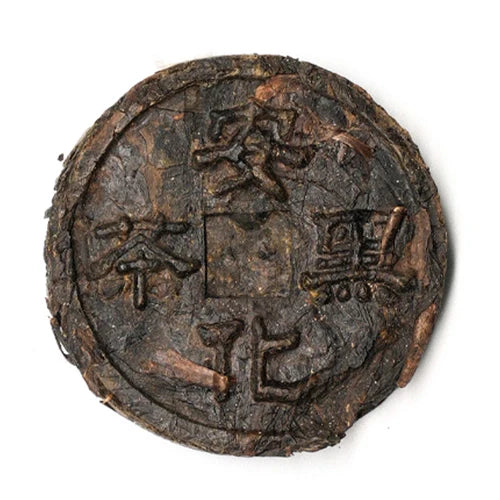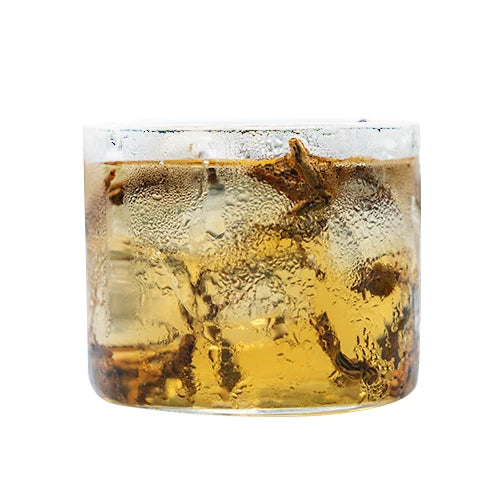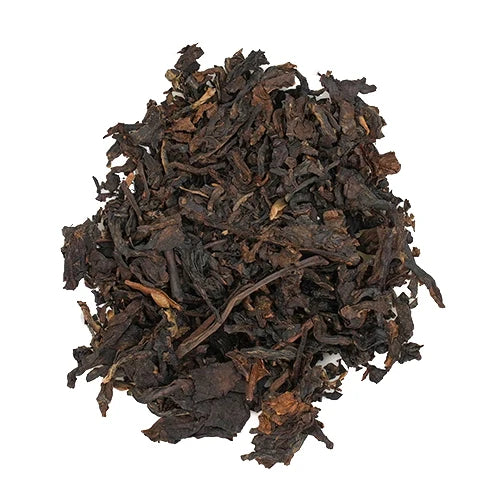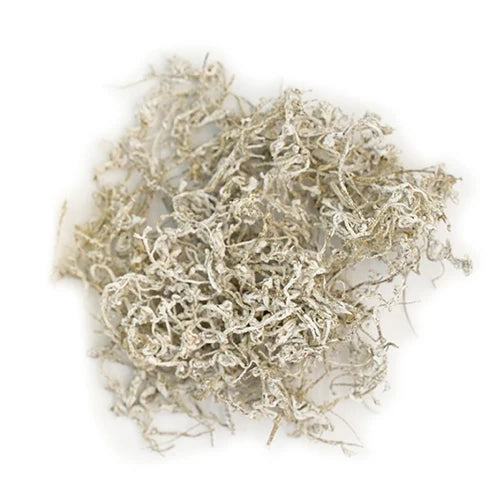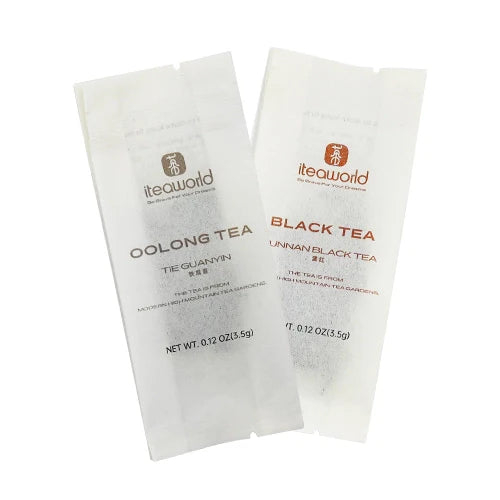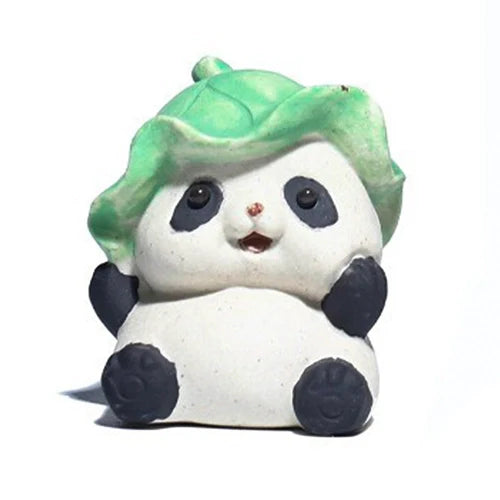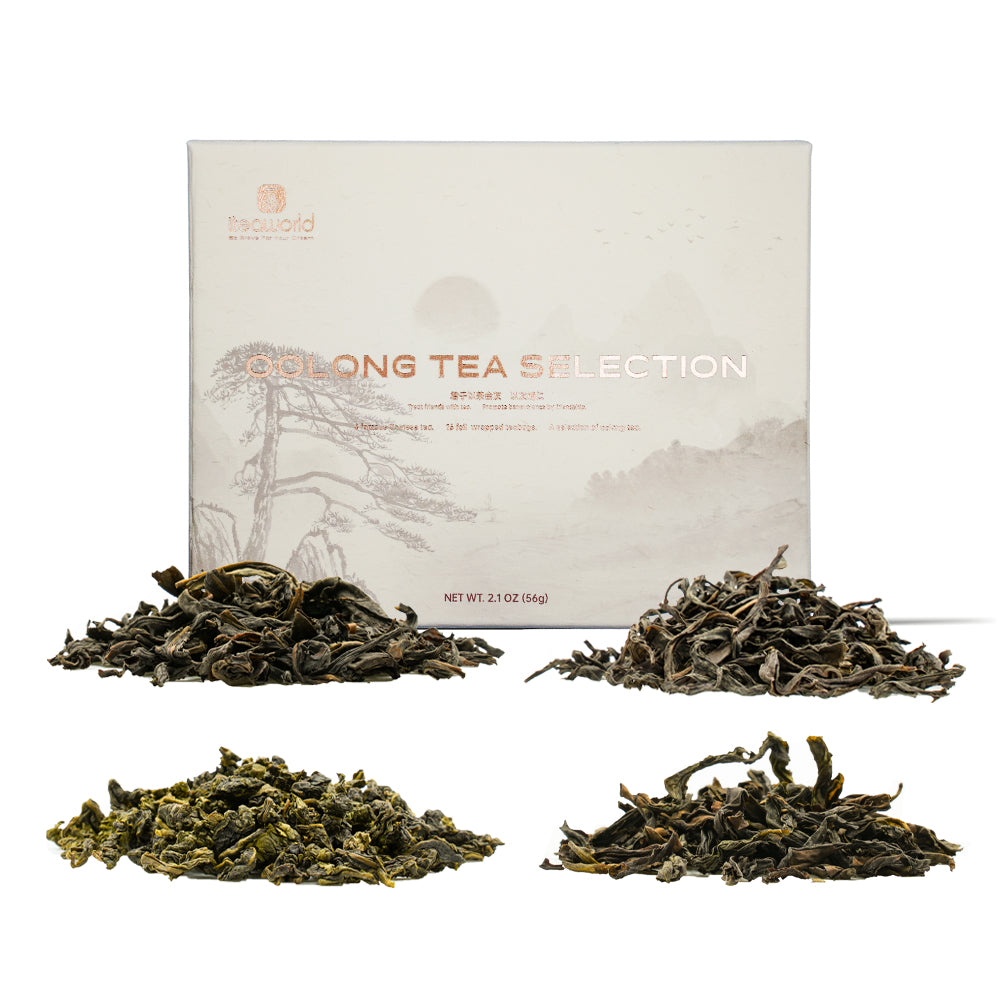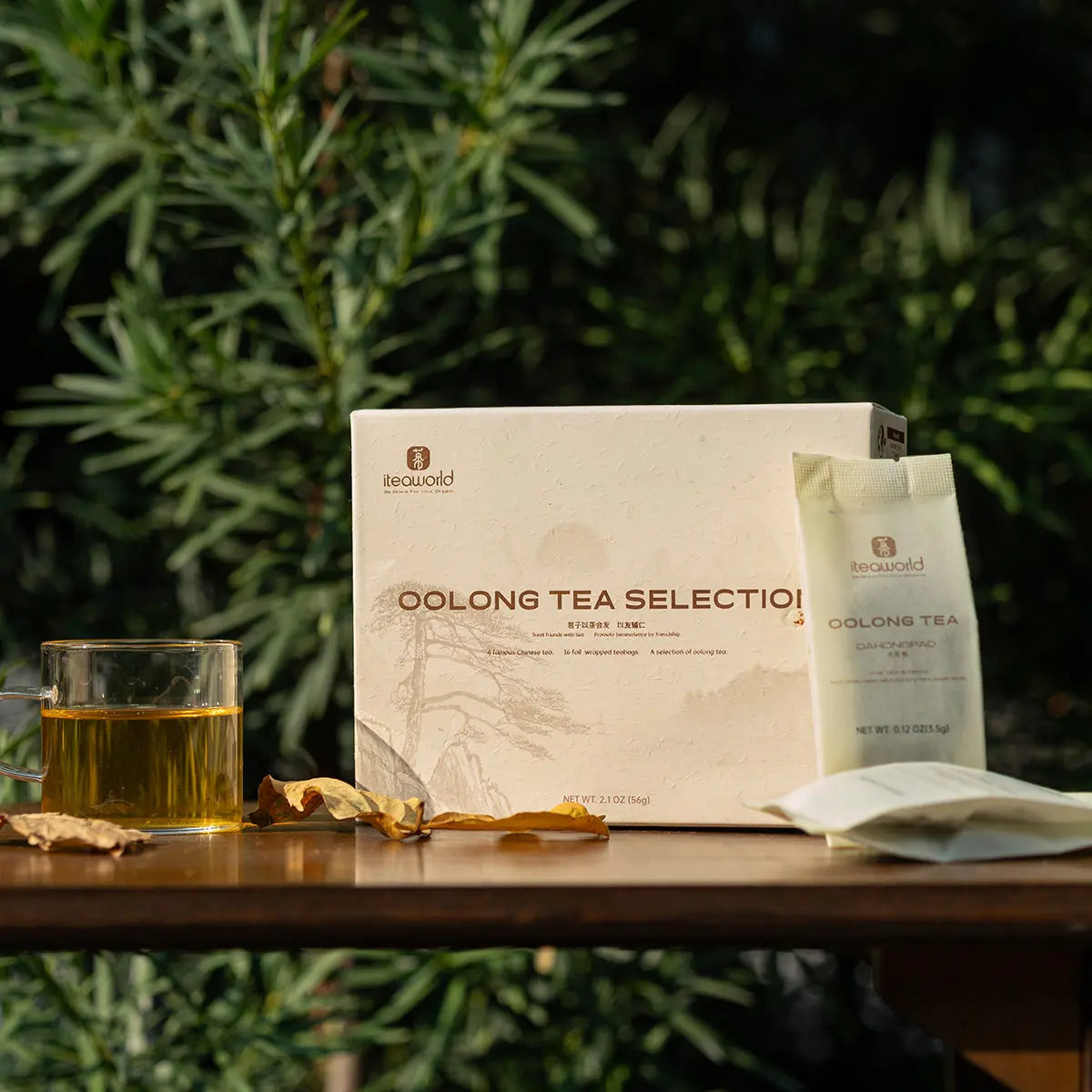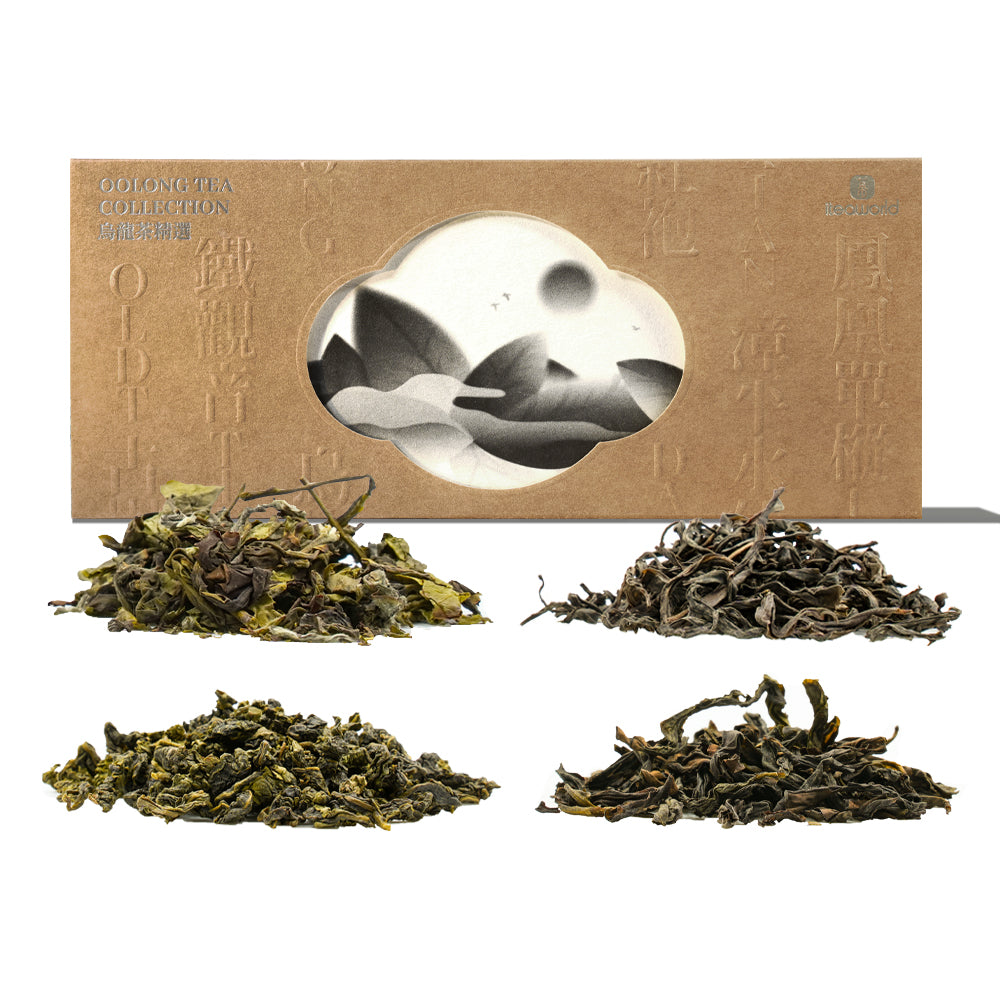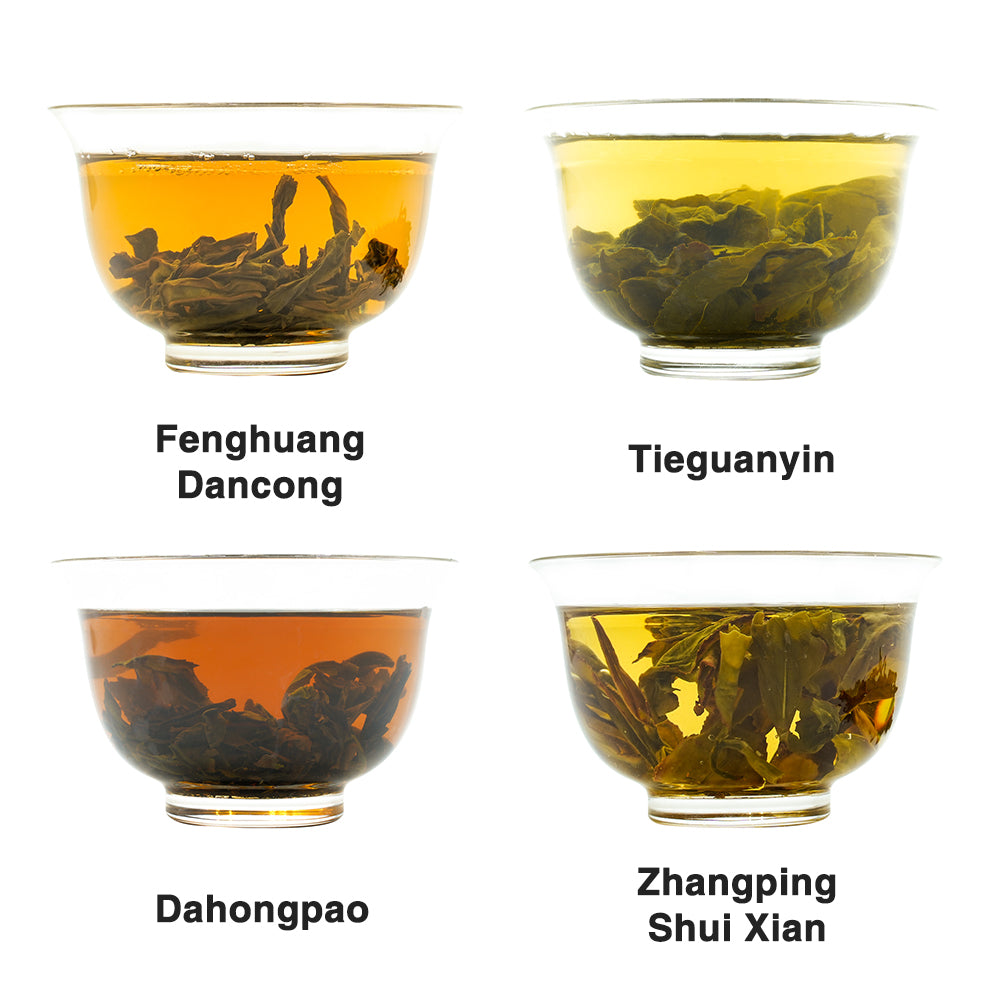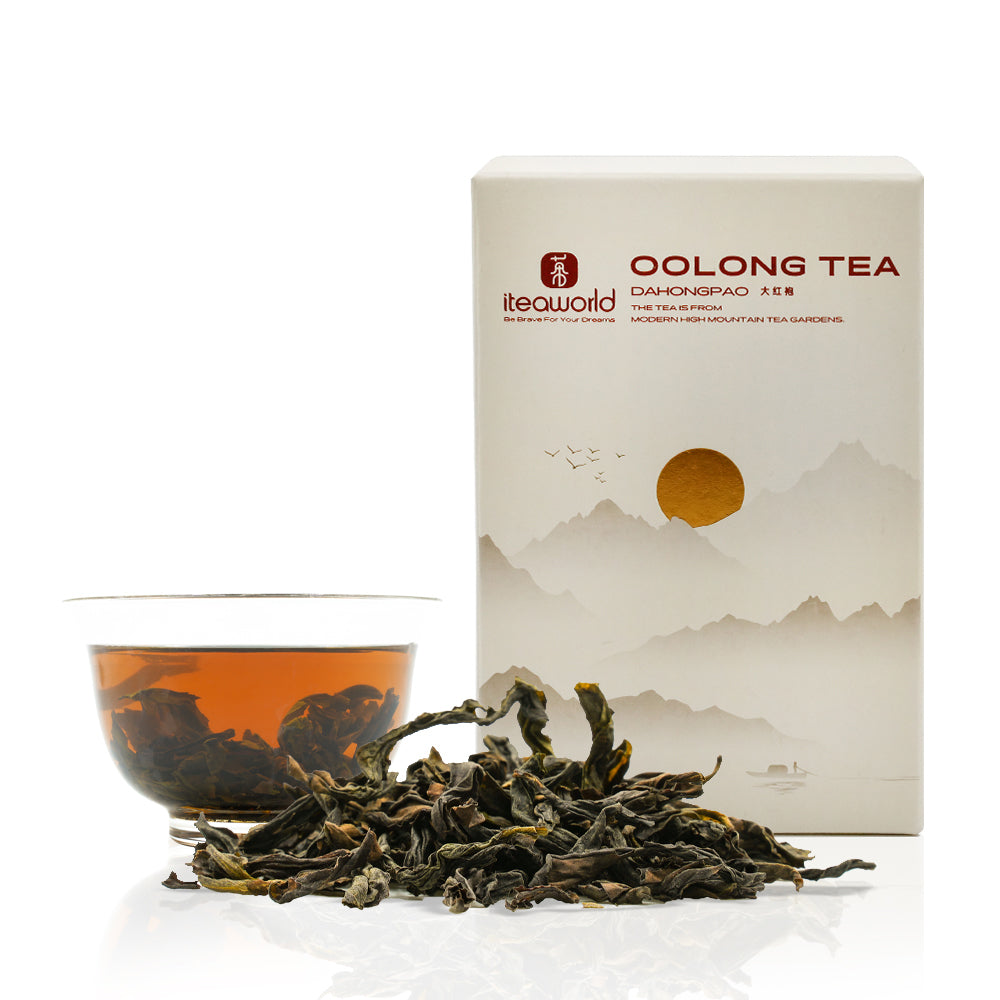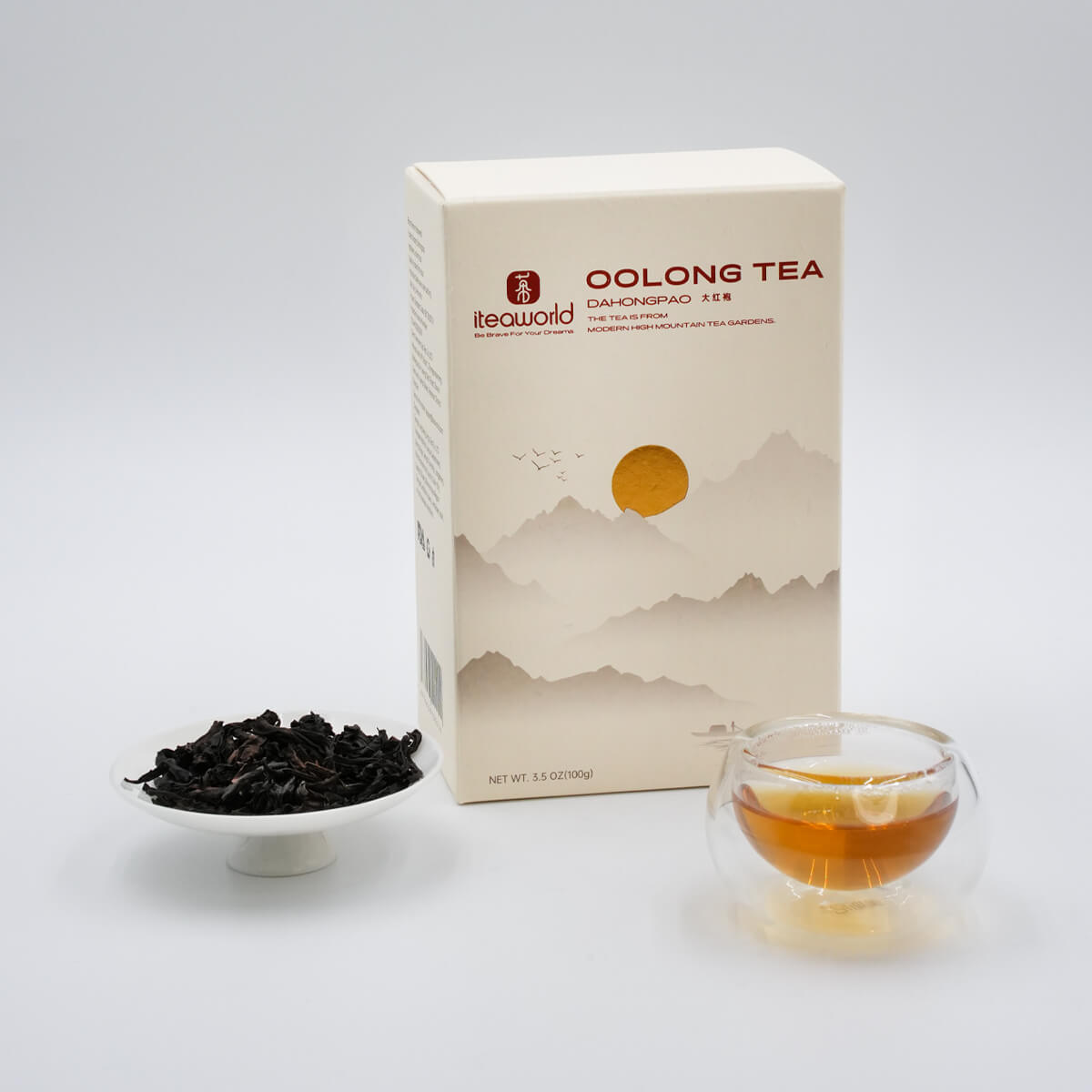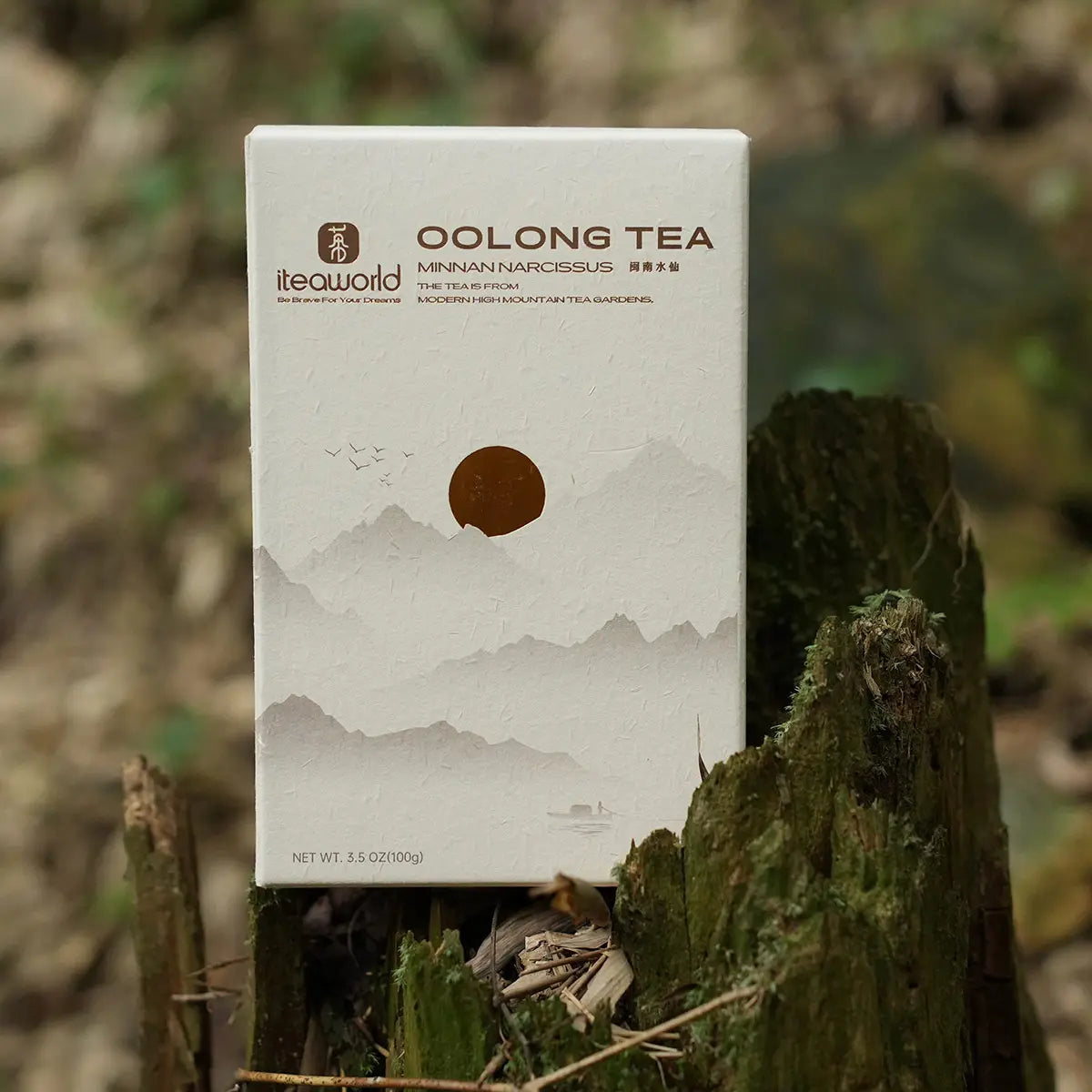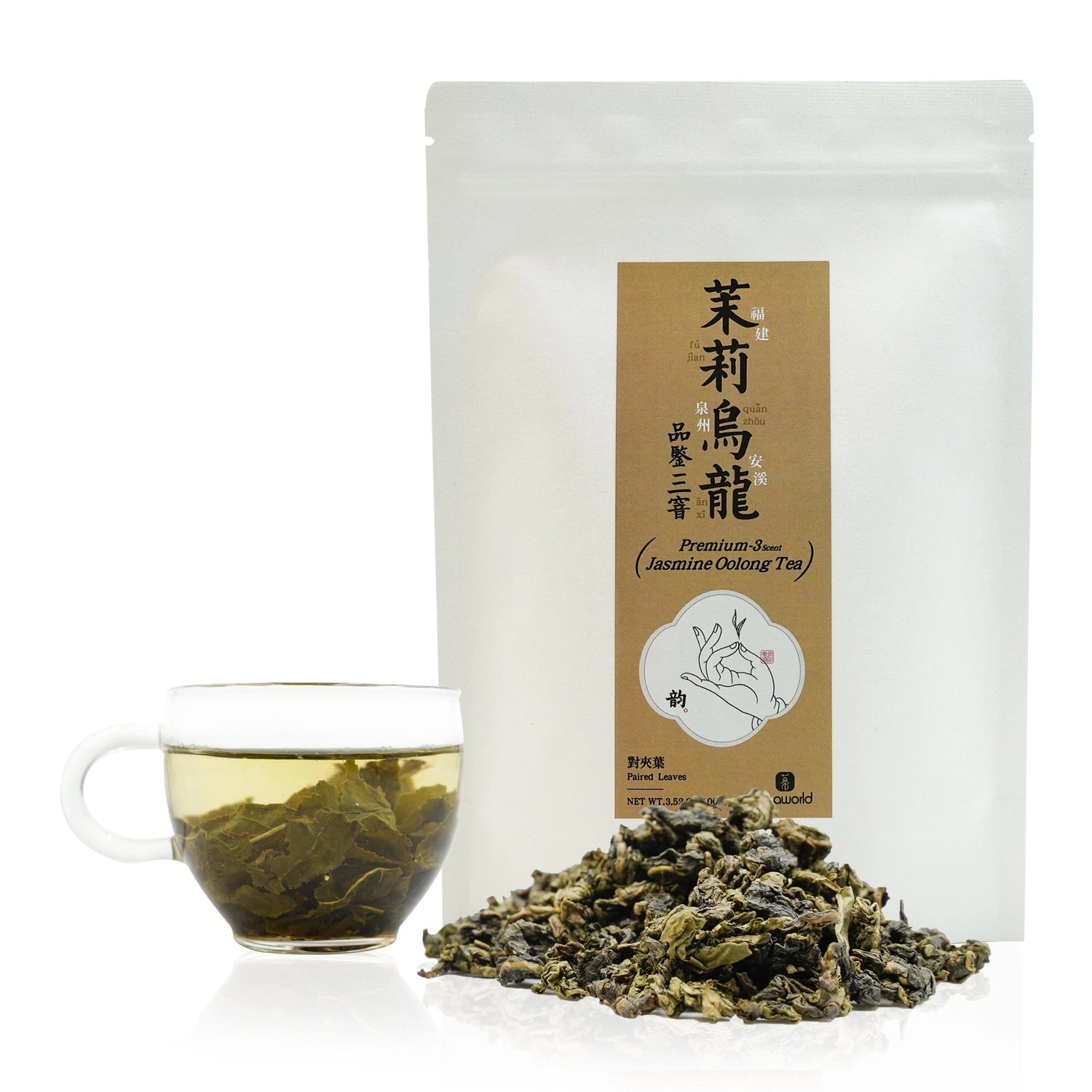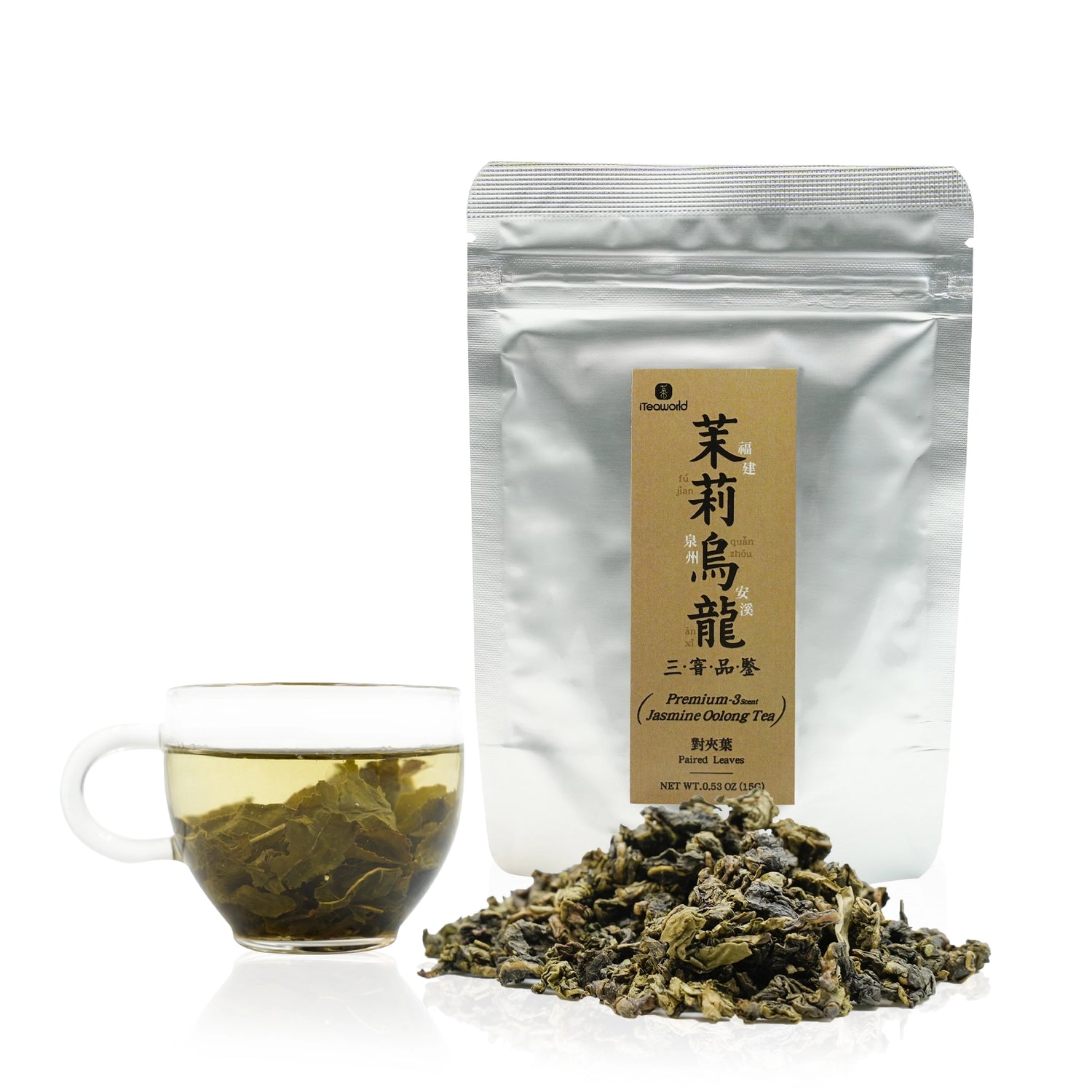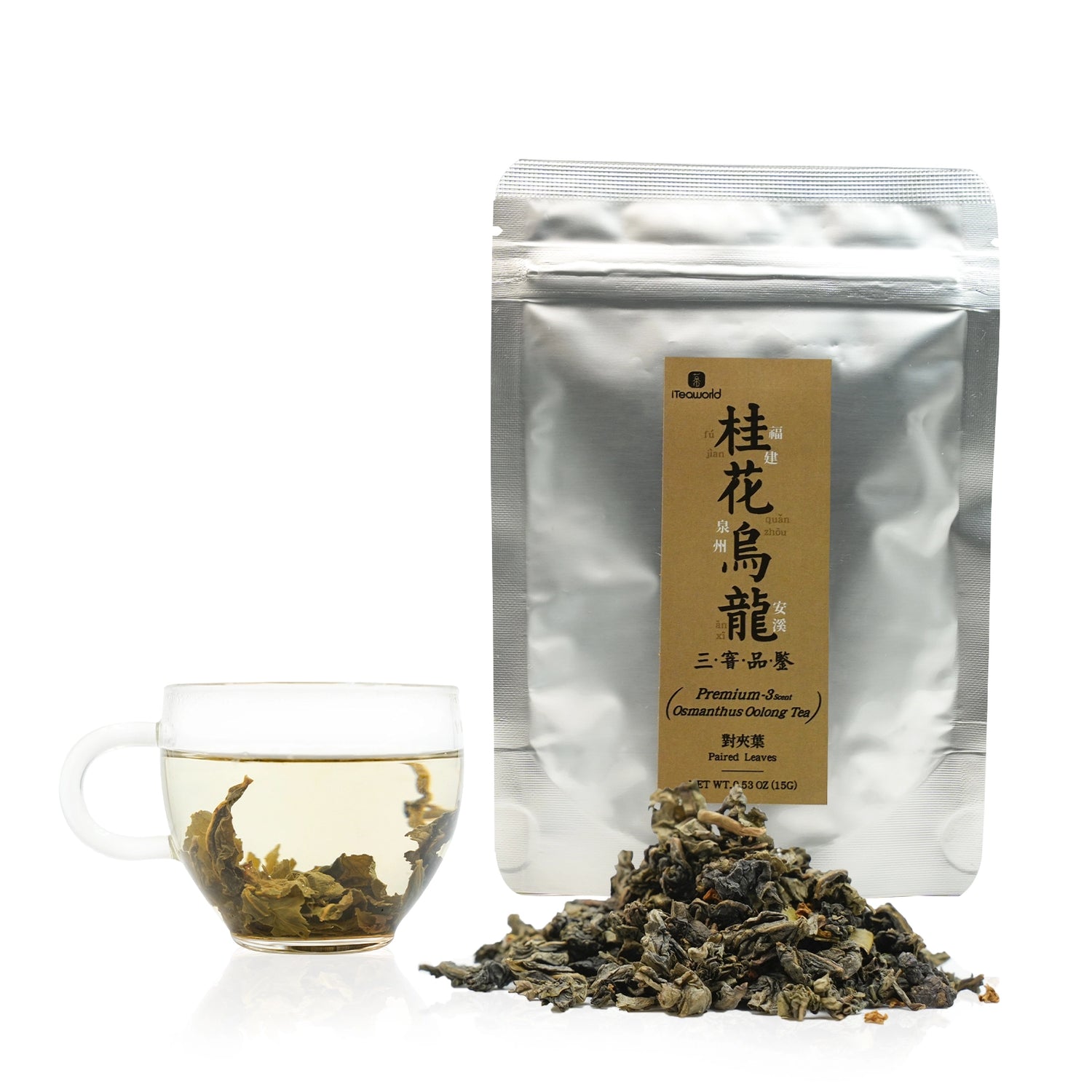Beginner-Friendly Picks
- New to oolong?
Start with the 10 Classic Oolongs – 10 signature flavors, easy 5g tea cakes. - Want to try traditional brewing?
Try the Oolong Sampler – 4 loose-leaf teas for teapots or gaiwans. - Have a flexible budget?
Upgrade to the Oolong Collection – premium quality, elegant presentation for a gift. - Know your taste? Try these:
Da Hong Pao
Bold & Roasted, full-bodied with toasty notes
Tie Guan Yin
Fresh & Floral, bright aroma and crisp taste
Minnan Shui Xian
Smooth & Woody, naturally sweet with a gentle finish
Sort by:
8 products
8 products
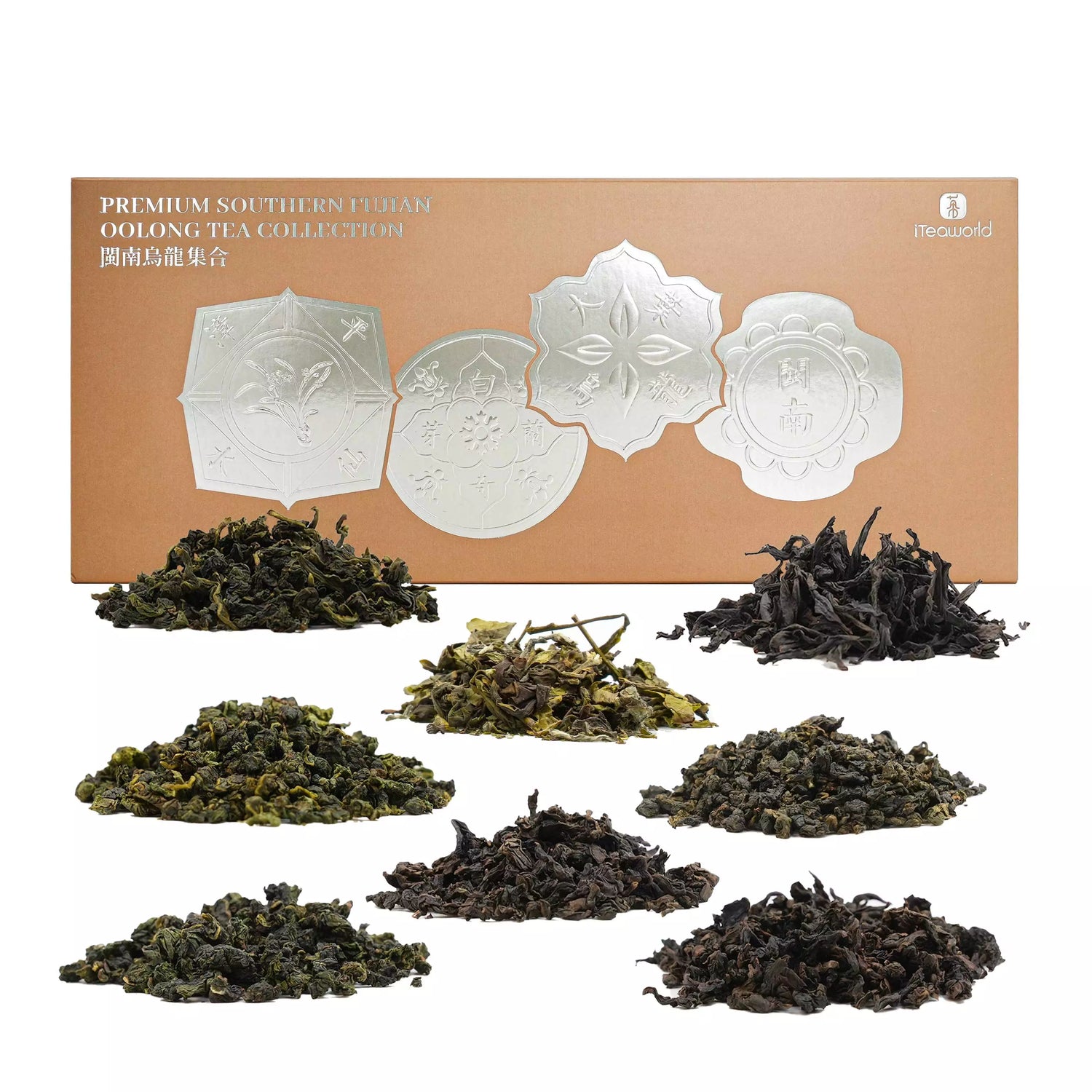

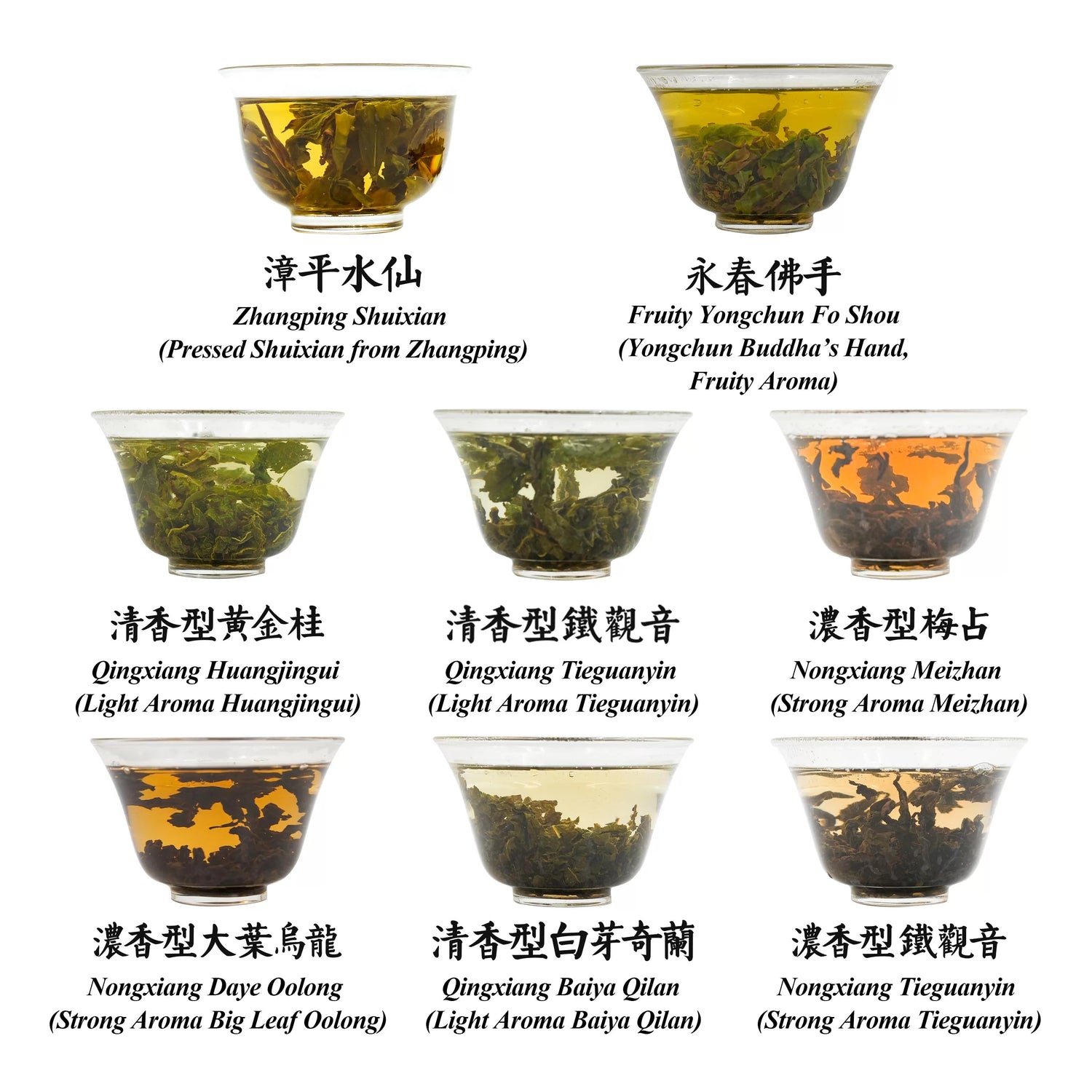
Southern Fujian Oolong Collection--8 unique historical flavors 100g
Southern Fujian Oolong Collection--8 unique historical flavors 100g
Explore the rich legacy of Southern Fujian oolong teas — home to the iconic Tie Guan Yin and Zhangping Shui Xian, both recognized as part of China’s Intangible Cultural Heritage. Since the 17th century, this region has pioneered the art of high-aroma oolongs, known for their floral, fruity, and gently roasted notes. Crafted with time-honored techniques like light oxidation, layered roasting, and meticulous leaf shaping, these teas capture the essence of Minnan tradition. Whether you're a seasoned tea drinker or just beginning your journey, this curated collection offers a true taste of oolong history.
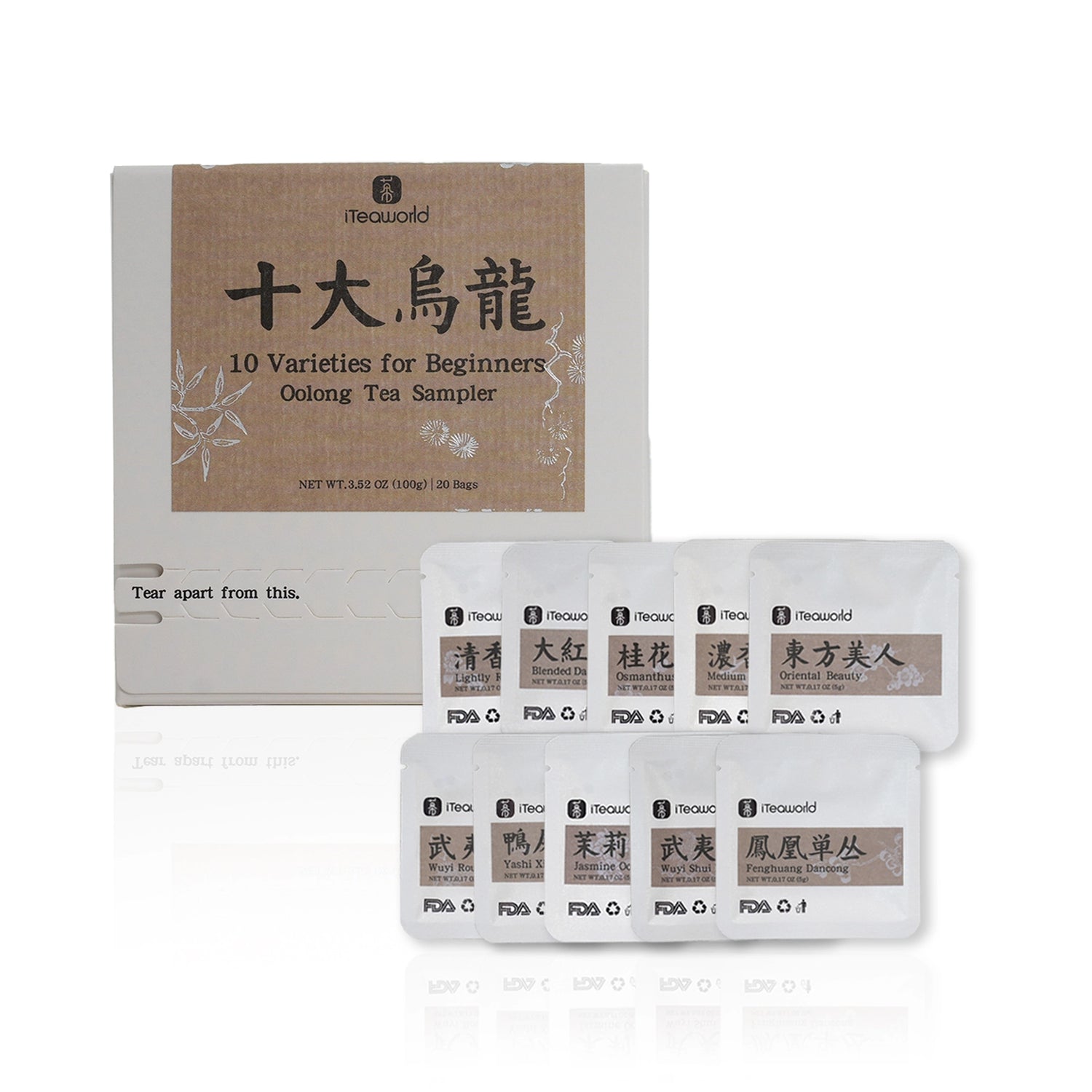

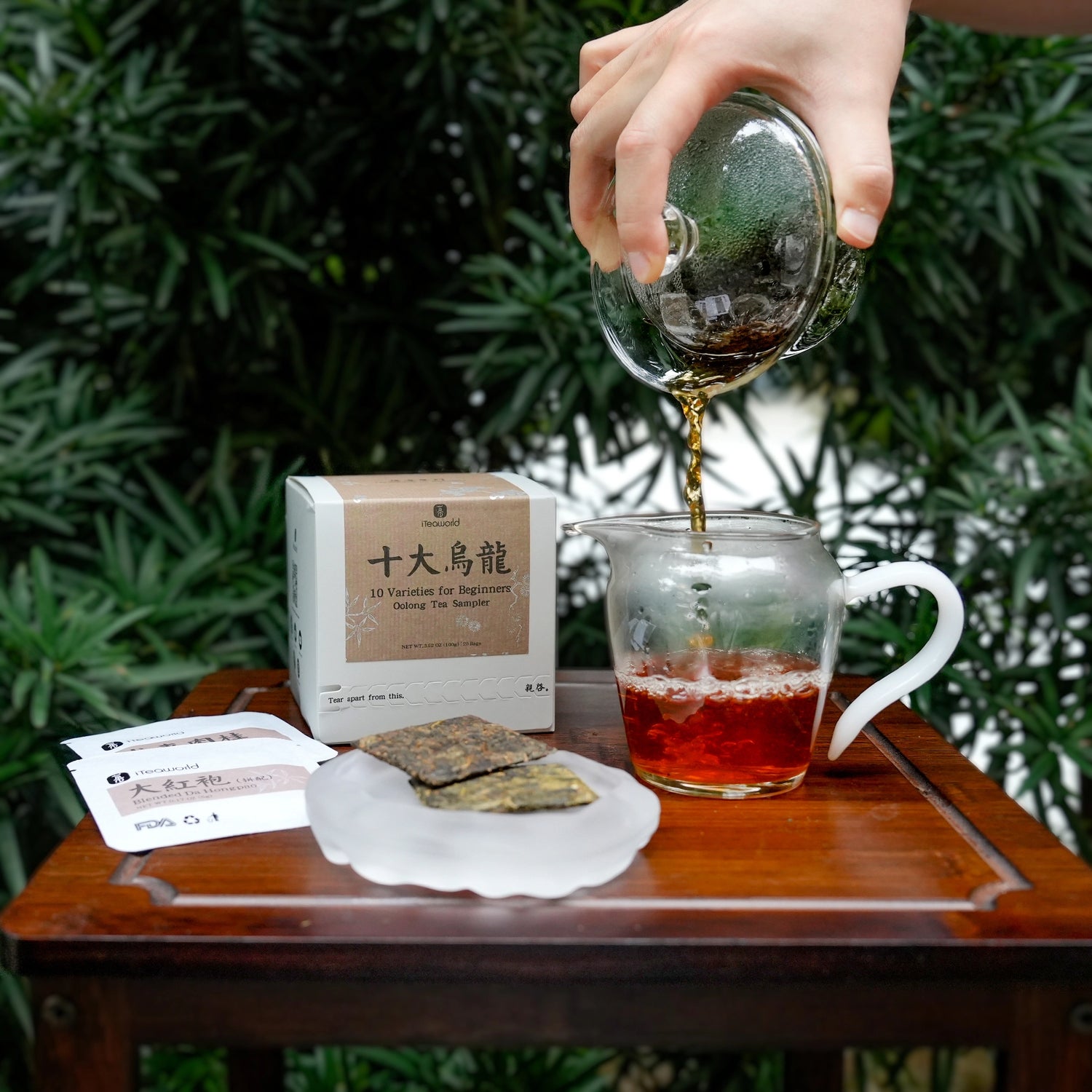
Oolong Teas Collection – Top 10 Classic for Beginners 100g (20bags)
Oolong Teas Collection – Top 10 Classic for Beginners 100g (20bags)
The best oolong tea collection for beginners — featuring 10 of the most iconic and popular Chinese oolong teas, with 2 mini tea cakes of each variety (20 pieces total).
Each tea is crafted from carefully selected loose leaves and pressed into convenient 5g mini cakes — just drop into hot water, no teaware needed.
This curated set showcases a broad spectrum of natural oolong flavors, from the fresh floral notes of Tie Guan Yin to the deep roasted richness of Da Hong Pao.
Absolutely no added sugar, artificial flavors, or colors — just 100% natural tea.
It’s the perfect way to explore authentic Chinese oolong tea and discover your personal favorites — a low-risk, high-value journey into real tea without the overwhelm.
Please note: Because the mini cakes are made from full loose leaves that are softened and compressed, some small leaf fragments may appear when steeped—this is completely normal and part of the natural tea experience.
The Oolong Tea Sampler comprises four renowned loose-leaf Oolong teas from China: Tie Guan Yin, Minnan Narcissus, Da Hong Pao, and Feng Huang Dan Cong. It provides a comprehensive opportunity to appreciate the disparities among Oolong teas, from their refreshing, floral, honeyed, to fruity aromas. Moreover, you'll delve into the variations in taste brought about by differences in fermentation levels and roasting intensities. Additionally, you'll explore the unique flavors derived from both modern high-mountain tea gardens and ancient tree plantations. This sampler simplifies the process of identifying your preferred Oolong tea variety.
Net weight: 80g total, 5g per pack. More tea, same price.
Each pack is perfect for both Gongfu-style and Western-style brewing—just the right amount for one brew.
Explore the World of Chinese Oolong Tea with Four Iconic Varieties
Discover the rich diversity of Chinese Oolong tea with this curated sampler featuring Da Hong Pao, Tie Guan Yin, Phoenix Dan Cong, and Zhangping Shui Xian. From lightly oxidized teas to deeply roasted rock teas, this set is a perfect introduction for tea lovers who want to explore the full spectrum of oolong flavors.
- Da Hong Pao: Bold and toasty, from Wuyi Mountains
- Tie Guan Yin: Light, floral, and elegant — a classic minnan oolong tea
- Fenghuang Dan Cong: Naturally fruity with rich orchid aroma
- Zhangping Shui Xian: Rare pressed oolong with subtle garden notes
Whether you're new to oolong or seeking variety, this set offers a sensory journey across China’s top tea regions, all in one elegant collection.
Introduction:
This Da Hong Pao tea is carefully selected from the autumn harvest of 2024. The exceptional growing conditions impart a rich, robust flavor and complex layers of taste. The plucking standard of one bud and two leaves ensures a full-bodied, sweet aftertaste, with a pronounced fruity aroma and a distinct "rock essence" (Yan Yun).
Reasons to Recommend:
- Rich History: With over 700 years of history, Da Hong Pao is regarded as the premier tea among scholars and literati.
- Core Production Area: Grown in the heart of Wuyi Mountain, Fujian, where the average annual temperature ranges from 16°C to 25°C, the frost-free period lasts 253-272 days, and annual rainfall is around 2000 mm. The acidic red soil, rich in organic matter and minerals, contributes to the unique flavor profile of Da Hong Pao tea trees.
- High-Altitude Tea Gardens: This tea is cultivated in high-altitude gardens in Wuyi Mountain, where the superior climate enhances the tea's richness, delivering a fuller, sweeter aftertaste and a more intense, lingering aroma with a pronounced "rock essence."
- Unique Roasting Process: Premium tea leaves are slowly roasted under gentle heat, developing a sweet fragrance with a subtle smoky undertone.
Oxidation Level: 50%-60%
Roasting Level: Full roast
Tea Garden Soil: Yellow soil
Processing Time: Autumn 2024
Best Before Date: 36 months
Tea Variety: Da Hong Pao Blend
Minnan Narcissus is a famous historical tea. It is a kind of oolong tea. During Xianfeng period (1851-1861), Shibao Zhen and his son brought 100 tea tree saplings from Wuyishan and planted the saplings in Dingxianyan successfully. Then, combining Wuyishan tea-making techniques and their own experience, Shibao Zhen and his son developed Dingxianyan Narcissus. The new type of tea was widely known by oversea Chinese, especially Chinese in Southeast Asia. At the beginning of 20th century, Dingxianyan Narcissus was widely transplanted to Wutaishan, Yongchun and it got a name: Yongchun Narcissus. After 1949, Yongchun Narcissus was transplanted to more than 10 towns in Minnan and got a name: Minnan Narcissus. Minnan Narcissus is distinct from other tea by its unique aroma.
This tea was freshly roasted on September 7 and is recommended to be stored for a period of time before drinking.
Why shouldn’t freshly roasted Oolong tea be consumed right away?
Right after roasting, the tea has a strong charcoal aroma that can mask its natural fragrance and flavor. It also retains a certain “fiery” quality — caffeine and tea polyphenols remain high, making the taste slightly harsh or astringent and potentially irritating to the throat or stomach. Drinking it too soon can also lead to a feeling of internal heat, especially for those prone to “heatiness” or during dry seasons, known in traditional Chinese medicine as “shang huo” (excess internal heat). These symptoms quickly subside once consumption stops.
To avoid discomfort, let the tea rest before drinking. This allows the fire taste to fade (“tui huo”) and the tea’s components to stabilize. Once rested, the tea becomes smoother and more balanced in both aroma and flavor. Lightly roasted teas need about 1–2 months to rest, while medium to heavily roasted ones require around 6 months.
2024 Jasmine Tieguanyin Oolong
Who It’s For:
Light, refreshing, and perfectly balanced, this Jasmine Tieguanyin Oolong is for tea lovers who enjoy subtle floral notes and a creamy, smooth finish. The lightly fermented Tieguanyin tea base is scented three times with fresh jasmine flowers, resulting in a tea that is delicate, buttery, and reminiscent of a serene garden. Best for those seeking a gentle, floral oolong rather than bold or heavy teas.
Tea Details:
Origin: Fangting Village, Huqiu Town, Anxi County, Quanzhou, Fujian
Harvest Date: September 2024
Scenting Rounds: 3 rounds
Tea Base: Fragrant-style Tieguanyin oolong
Tea Cultivar: Tieguanyin
Flavor Profile: Clean and fresh jasmine aroma, silky smooth texture, with a creamy mouthfeel.
What Makes It Special: The perfect marriage of jasmine’s uplifting scent and Tieguanyin’s velvety smoothness, offering a truly luxurious yet refreshing tea experience.
How to Brew
Water Temp: 212°F(or 100℃)
Tea-to-Water: 1g per 20ml
Steep Time: 30 sec for first 3 steeps, add 5 sec each time after
Teaware: White porcelain gaiwan or clay teapot
Re-Steep: 5-7 times
Jasmine Oolong Tea
Authentic Jasmine Oolong is a premium tea that combines the fresh, fragrant notes of Jasmine flowers with the smooth, rich flavor of Oolong tea. The process involves carefully blending freshly bloomed Jasmine flowers with Oolong tea leaves during the drying stage, allowing the tea to absorb the flower's natural fragrance. The more times the tea is scented with Jasmine flowers, the more intense and aromatic the floral notes become. After the scenting process, the tea is dried again to lock in that fresh, vibrant Jasmine aroma.
For the best flavor, Jasmine Oolong is typically made with high-quality, lightly fragrant Tie Guan Yin Oolong tea leaves, harvested during the summer or autumn season. The result is a tea that’s perfectly balanced: the fresh, lively Jasmine fragrance mingles seamlessly with the smooth, creamy taste of Oolong. It’s like stepping into a garden full of blooming Jasmine flowers, where the sweet floral notes and the smooth, sweet tea create a refreshing, comforting experience in every sip.
This Jasmine Oolong tea is perfect for anyone who enjoys a balance of light floral notes with a rich, smooth finish—ideal for any time of day when you're craving something fragrant and refreshing.
2024 Traditional Osmanthus Oolong
Who It’s For:
If you love teas with a deep, layered profile and long-lasting floral notes, this Osmanthus Oolong is a must-try. Crafted with a base of aged aromatic oolong tea and the fragrant blossoms of century-old osmanthus trees, this tea undergoes a meticulous three-round scenting process. The result? A rich, sweet brew where the floral elegance of osmanthus perfectly complements the tea’s mellow depth. Ideal for tea lovers who appreciate traditional crafting methods and unique floral teas. If you’re looking for rare and artisanal tea experiences, this one checks all the boxes.
Tea Details:
Origin: Fangting Village, Huqiu Town, Anxi County, Quanzhou, Fujian
Harvest Date: October 2024
Grade: First Grade (One bud, two leaves)
Tea Base: Aged aromatic oolong tea
Tea Cultivar: Tieguanyin
Tea Master: Chen Qizhi, a 30-year tea artisan
Flavor Profile: Bold and lasting osmanthus aroma, with the sweet, mellow body of aged oolong tea
What Makes It Special: Made with rare century-old osmanthus blossoms and aged oolong, this tea is meticulously scented three times for a truly exquisite experience.
Osmanthus Oolong Tea
Hailing from Anxi in Fujian, the birthplace of Tie Guan Yin Oolong, this Osmanthus Oolong tea is crafted with a unique traditional method that combines the finest Oolong tea leaves with fresh Osmanthus flowers. The process begins with carefully selecting tender Oolong tea leaves, which undergo a series of traditional steps, including withering, shaking to release the aroma (摇青), rolling, and initial drying. After the leaves are partially dried, fresh Osmanthus flowers are added during the final drying stages, allowing the natural floral fragrance to fully infuse into the tea leaves.
The result is a tea that beautifully blends the richness of Oolong with the delicate, sweet aroma of Osmanthus flowers. It combines the smooth, full-bodied taste of black tea with the refreshing, light qualities of green tea, creating a perfect balance of bold and delicate flavors. This Osmanthus Oolong is ideal for anyone who enjoys a complex yet soothing tea with a unique floral twist.
How to brew:
Water Temp: 212°F(or 100℃)
Tea-to-Water: 1g per 20ml
Steep Time: Discard the first steep; 20 sec for 2nd–4th steeps, add 5 sec each time after
Teaware: White porcelain gaiwan or clay teapot
Re-Steep: 5-7 times
FAQs
Brewing oolong tea isn’t difficult at all—just follow a few key tips and you’ll enjoy a flavorful cup with ease:
Water Temperature: 85°C to 100°C (185°F to 212°F), depending on the tea type
Tea-to-Water Ratio: Use one mini tea cake (5g) or 1–2 teaspoons of loose leaf for every 200ml (7oz) of water
Steeping Time: Steep for about 30–60 seconds on the first brew. Increase time slightly for each additional infusion
Multiple Infusions: Oolong tea is known for being re-steepable—usually 3 to 5 times or more. Each infusion reveals new layers of aroma and taste.
Oolong tea contains a moderate amount of caffeine and is rich in polyphenols, which can help boost energy, support digestion, and promote overall wellness when consumed in the right amount.
✅ Recommended Times to Enjoy Oolong Tea:
After Breakfast (9:00–10:30 AM)
Gently wakes up your digestive system and boosts mental clarity.
- After Lunch (1:00–3:00 PM)
Helps with digestion and cuts through greasy meals—especially useful after heavy lunches. - Afternoon Tea Time (3:00–5:00 PM)
Relieves fatigue and refreshes your mind. This is one of the best times for daily tea drinking. - After Dinner (before 7:00 PM, in moderation)
You may enjoy a low-caffeine or roasted oolong (like Da Hong Pao) to aid digestion, but avoid drinking too late to prevent sleep disruption.
❌ Times to Avoid:
On an empty stomach: Oolong tea has warming properties and may increase stomach acid when consumed without food.
Within 2 hours before bed: Its caffeine content may interfere with your sleep quality.
☕ How Much Per Day?
For most people, 2 to 4 cups per day (about 10–20g of dry tea) is a healthy and enjoyable range. Since oolong tea can be steeped multiple times, you can spread out your tea sessions throughout the day.
Oolong tea is a semi-oxidized tea, positioned between green and black tea in terms of processing and flavor. This means it combines the freshness of green tea with the richness of black tea—a truly unique balance.
Green Tea is unoxidized, retaining its grassy, vegetal notes and a light, refreshing taste. It's perfect for those who enjoy a clean and delicate flavor.
Black Tea is fully oxidized, offering bold, smooth flavors with notes of honey, malt, or fruit. It’s warming and full-bodied.
Oolong Tea is partially oxidized (typically between 10% and 70%). Its flavor varies widely:
Lightly oxidized oolongs (like Tie Guan Yin) are floral and crisp.
Medium to heavily oxidized oolongs (like Da Hong Pao) are rich, roasted, and warming.
Some, like Oriental Beauty, have a sweet, honeyed aroma.
Another key difference: oolong tea is more resilient to multiple infusions than green tea. You can steep the same leaves 3–5 times or more, with each infusion gradually unfolding new layers of aroma and flavor. It’s ideal for slow sipping and mindful tea sessions.
Core Concept: Start small, focus on practice, enjoy the process.
Step 1: Get basic knowledge and beginner tea samples
Learn the basic concepts and categories of oolong tea. Buy some beginner-level tea samples to taste.
Step 2: Learn how to brew
Learn the brewing methods of oolong tea. You don’t need many tools—just start with mastering the tea-to-water ratio and steeping time.
Step 3: Taste carefully
Pay attention to the experience of each tea session—the color of the liquor, the leaves, the taste, and the aroma. This is key to understanding each type of oolong tea.
Step 4: Deepen learning and practice
Comparative tasting: Try different grades of the same type of tea or teas from different mountains.
Expand exploration: Try more oolong varieties.
Use resources:
High-quality blogs/websites: The tea brand’s official website blog, such as iTeaworld’s oolong tea blog.
Online/Offline Communities:
Reddit: The r/tea community is very active—you can ask questions, share, and read others’ tasting notes.
Local tea events/workshops.
The charm of oolong tea lies in its rich layers of aroma and ever-changing taste. For example:
Some are fresh and elegant, like Tie Guan Yin
Some are sweet and smooth like honey, like Oriental Beauty
Some are rich and mellow with a lingering aftertaste, like Da Hong Pao
What makes oolong tea special is that “the more you steep, the more flavor it reveals.” It is highly re-steepable, and each infusion shows a different character—like having a conversation with tea.
The first brew is fragrant and pleasant
The second brew is sweet and refreshing
From the third brew on, the aroma becomes softer, and the taste grows deeper
You can’t help but steep again and again, falling deeper in love with it.
Each kind of oolong tea is like a “flavor story,” combining the expression of nature with the craftsmanship of the tea master and the terroir of the mountain. The process of drinking tea is also a journey of exploration and enjoyment.
No worries! We offer a 30-day satisfaction guarantee. If the tea isn’t to your liking, you can get a refund—no returns needed. Just contact our customer service anytime. It’s a zero-risk way to explore and find the flavors you truly enjoy.
Absolutely—your safety is our top priority.
✅ Meets U.S. FDA requirements
All our teas pass mandatory radiation tests required by the FDA. Without this, they wouldn’t even clear customs.
✅ EU-level pesticide testing
Our teas have passed testing for over 500 pesticide residues. Ingredients in our Wild & Old Tree Tea Series meet EU export standards (certification in progress).
✅ From high-mountain, low-intervention gardens
We source teas from high-altitude farms with minimal human intervention, using seed-propagated heirloom varieties. These tea trees grow naturally—far from the heavy pesticide and fertilizer use found in industrial plantations.
✅ Full traceability and transparency
We share detailed origin info for each tea, down to the township, plus tea maker, harvest date, tree variety, elevation, soil type, and more. For green tea, you'll also see the leaf grade.
Can’t find what you’re looking for? Just ask our customer service—we’re happy to help.
SHOP WITH CONFIDENCE AT iTeaworld
Chat with fellow tea lovers, ask questions, and share your tea moments.





